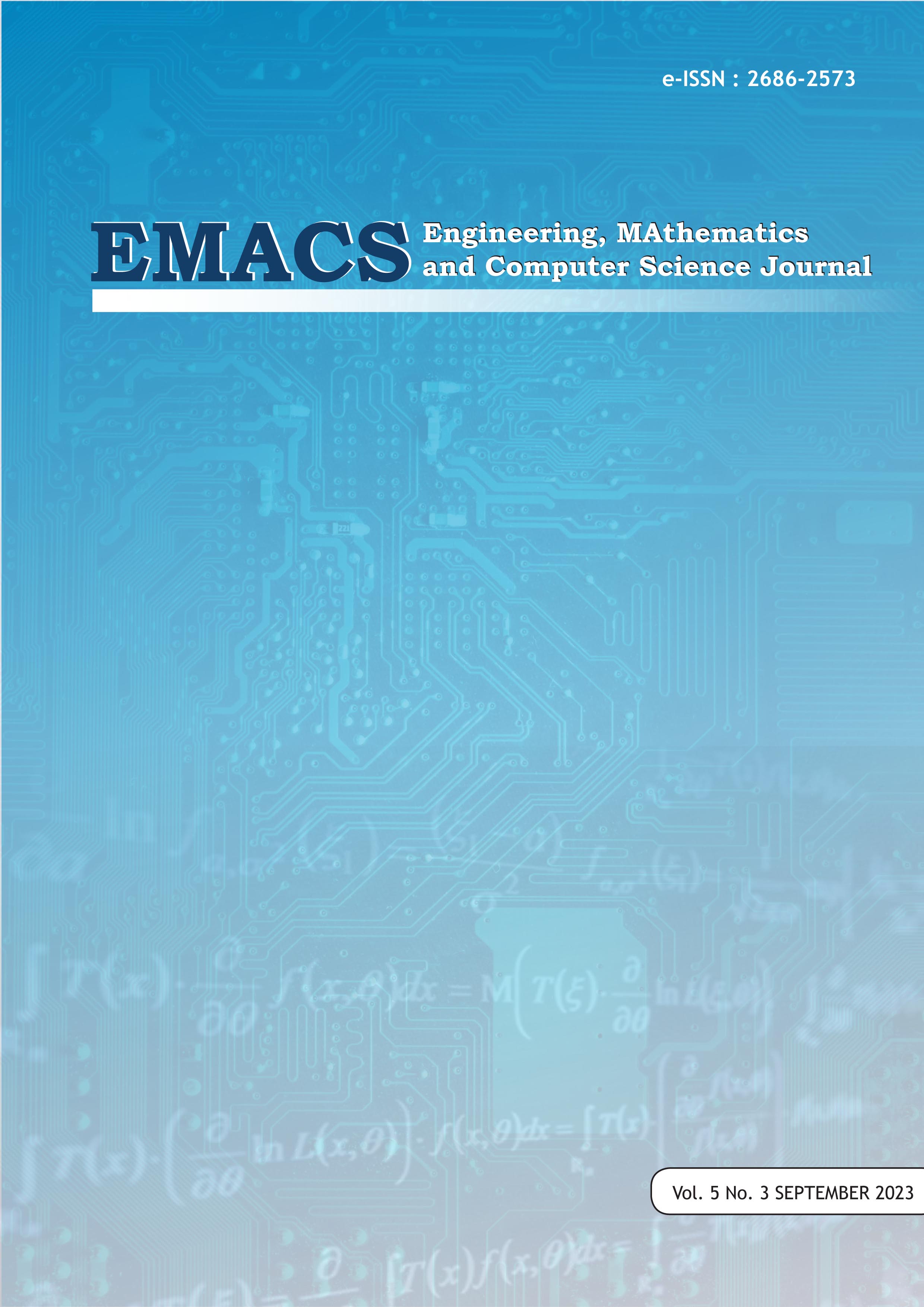Minimizing Defects in Radiator Grille Upper Garnish Parts using Six Sigma (DMAIC) at PT. AAS
DOI:
https://doi.org/10.21512/emacsjournal.v5i3.10481Keywords:
Six Sigma, DMAIC, Quality AnalysisAbstract
To achieve quality improvement, companies must align their production processes with customer needs, control production costs effectively, and maintain product quality. This approach enhances customer satisfaction, increases market share, and boosts profitability. PT. AAS, an automotive company specializing in injection molding and painting, relies on resin as its primary raw material to produce car parts for major clients like Hyundai, Suzuki, and Astra. To dominate the market, PT. AAS must prioritize delivering quality products on time to earn customer trust and secure continuous orders. Initially, the QC data for the injection molding area showed a high defect rate of approximately 17.5% for the Garnish Radiator Grille Upper part, from December 2022 to May 2023. Prior to implementing the Six Sigma method, PT. AAS had a DPMO (Defects Per Million Opportunities) value of 58,177, equivalent to a 3.10 Sigma level. After applying the Six Sigma DMAIC (Define, Measure, Analyze, Improve, Control) process, the DPMO decreased to 17,991, resulting in a 3.60 Sigma level. This suggests that PT. AAS currently operates at a 4 Sigma level, with a strong potential to reach 5 or even 6 Sigma by addressing the root causes of rejection. The fishbone analysis highlights the need for action across all departments, including Management. Key areas to focus on include Material, ensuring the correct resin delivery to the Injection Molding station; Machine, verifying proper machine settings and utilizing the 5S methodology; Environment, optimizing room temperature and ventilation; and Man, providing training to enhance operators' knowledge and sense of responsibility.
References
Adeodu, A., Maladzhi, R., Kana-Kana Katumba, M. G., & Daniyan, I. (2023). Development of an improvement framework for warehouse processes using lean Six Sigma (DMAIC) approach. A case of third-party logistics (3PL) services. Heliyon, 9(4). https://doi.org/10.1016/j.heliyon.2023.e14915
Antony, J., Gijo, E. V., & Childe, S. J. (2012). Case study in Six Sigma methodology: Manufacturing quality improvement and guidance for managers. Production Planning and Control, 23(8). https://doi.org/10.1080/09537287.2011.576404
Byrne, B., McDermott, O., & Noonan, J. (2021). Applying lean Six Sigma methodology to a pharmaceutical manufacturing facility: A case study. Processes, 9(3). https://doi.org/10.3390/pr9030550
Cima, R. R., Brown, M. J., Hebl, J. R., Moore, R., Rogers, J. C., Kollengode, A., Amstutz, G. J., Weisbrod, C. A., Narr, B. J., & Deschamps, C. (2011). Use of lean and Six Sigma methodology to improve operating room efficiency in a high-volume tertiary-care academic medical center. Journal of the American College of Surgeons, 213(1). https://doi.org/10.1016/j.jamcollsurg.2011.02.009
Gaikwad, L. M., Sunnapwar, V. K., Teli, S. N., & Parab, A. B. (2019). Application of DMAIC and SPC to Improve Operational Performance of Manufacturing Industry: A Case Study. Journal of The Institution of Engineers (India): Series C, 100(1). https://doi.org/10.1007/s40032-017-0395-5
Gijo, E. V., Antony, J., Kumar, M., McAdam, R., & Hernandez, J. (2014). An application of Six Sigma methodology for improving the first pass yield of a grinding process. Journal of Manufacturing Technology Management, 25(1). https://doi.org/10.1108/JMTM-12-2011-0109
Kholil, M. (2022). Quality Control Analysis of Pillow and Bolster Products with DMAIC And FMEA Method Approach in CV. Saiky Indonesia. International Journal Of Scientific Advances, 3(2). https://doi.org/10.51542/ijscia.v3i2.16
Liu, H., & Hua, Y. L. (2017). Application of Minitab software in cashmere product quality improvement. Wool Textile Journal, 45(12). https://doi.org/10.19333/j.mfkj.2016120331204
Okagbue, H. I., Oguntunde, P. E., Obasi, E. C. M., & Akhmetshin, E. M. (2021). Trends and usage pattern of SPSS and Minitab Software in Scientific research. Journal of Physics: Conference Series, 1734(1). https://doi.org/10.1088/1742-6596/1734/1/012017
Pratikno, A. S., Prastiwi, A. A., & Ramahwati, S. (2020). Continuous Random Probability Distribution, Normal Distribution, Standard Normal Distribution, T Distribution, Chi-Square Distribution, and F Distribution. Osf Preprints, 27(3).
Rahayu, N. A., & Santoso, S. (2021). Implementation of Six Sigma to Minimize Reject Gusset Difference and Fold in the Blowing Process. European Journal of Business and Management Research, 6(4). https://doi.org/10.24018/ejbmr.2021.6.4.913
Surange, V. G. (2015). Implementation of Six Sigma to Reduce Cost of Quality: A Case Study of Automobile Sector. Journal of Failure Analysis and Prevention, 15(2). https://doi.org/10.1007/s11668-015-9927-6
Suryaningrat, I., Ruriani, E., Indah Kurniawati, dan, & Pengajar Jurusan Teknik Pertanian Fakultas Teknologi Pertania, S. (n.d.). Application of Quality Function Deployment (QFD) Method for Quality Improvement of Corn Noodle Product.
Wang, C. C., Chen, K. S., Wang, C. H., & Chang, P. H. (2011). Application of a 6-sigma design system to develop an improvement model for multi-process multi-characteristic product quality. Proceedings of the Institution of Mechanical Engineers, Part B: Journal of Engineering Manufacture,225(7). https://doi.org/10.1177/2041297510393464
Downloads
Published
How to Cite
Issue
Section
License
Copyright (c) 2023 Engineering, MAthematics and Computer Science Journal (EMACS)

This work is licensed under a Creative Commons Attribution-ShareAlike 4.0 International License.
Authors who publish with this journal agree to the following terms:
- Authors retain copyright and grant the journal right of first publication with the work simultaneously licensed under a Creative Commons Attribution License - Share Alike that allows others to share the work with an acknowledgment of the work's authorship and initial publication in this journal.
- Authors are able to enter into separate, additional contractual arrangements for the non-exclusive distribution of the journal's published version of the work (e.g., post it to an institutional repository or publish it in a book), with an acknowledgment of its initial publication in this journal.
- Authors are permitted and encouraged to post their work online (e.g., in institutional repositories or on their website) prior to and during the submission process, as it can lead to productive exchanges, as well as earlier and greater citation of published work.
USER RIGHTS
All articles published Open Access will be immediately and permanently free for everyone to read and download. We are continuously working with our author communities to select the best choice of license options, currently being defined for this journal as follows: Creative Commons Attribution-Share Alike (CC BY-SA)





